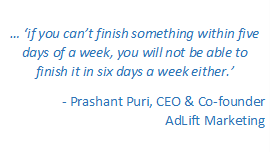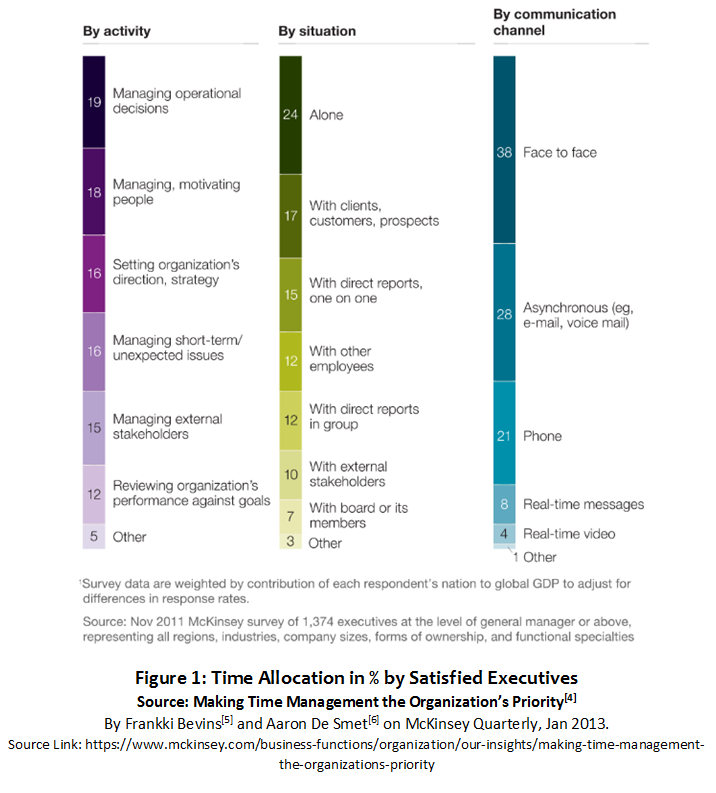How Not To Work on the Weekends?

Working in a fast-growing digital marketing company, I have multiple colleagues who are working their arses off in the company. Many of these people end up working on either weekend or after office hours. Fortunately, for my team, this kind of time allotment has never been there despite the work-pressure.
Recently, I came across a colleague who finally admitted to this rut and how she’d not like to be in it. Instead of arguing or countering her point of view I ended up thinking, “is something similar happening to me?” “Has my team ever had to do the unthinkable (yes working on holidays is kind of taboo with us)?”
The answer to my doubts is, “not in a fairly long time.” Since I and my colleague both agreed to this conclusion, she asked me the obvious question – “How?”
There’s no straight answer, we do a lot of things to ensure this ‘luxury’. Also, I do not feel in any way, that we do everything possible, or there are no other ways. In fact, my whole team and I are aware of the fact that we may just be picking up things that are convenient to do.
Whatever be the case, it is helping us relax on the weekends and after office hours. Hope these small activities will help you too. However, if you are a business writer or in a similar ops profile, these steps will be more relevant.
Prioritizing is the Top Priority
HBR’s Elizabeth Grace Saunders[1], in her article[2] in HBR Ascend, has summarized the activities we often do as obvious things pretty well. She goes a to an advanced level of ‘Prioritizing’. While all of us know it is important, we often struggle with, ‘on what basis do I put this over the other.’ Or, more often, ‘everything seems equally important.’
Elizabeth offers a solution to such dilemma in prioritization. She has classified all activities into three buckets:
- Investment activity
- Neutral activity
- Optimization activity
Investment activities are the ones which are expected to add great value to you or the client you are working for with perfection. So, you may want to spend more time on such activities. For example, the business presentation deck for a new client your team is trying to onboard.
Neutral activities on the other hand, just need to be done adequately. For example, sending the PPT to your teammates for review.
Optimize activities, in the end, are the ones which only eat up your valuable time which you could’ve spent in ‘investment activities’.
Pro Tip: Spending time with yourself and your family members is also an investment activity, make the most of it. (Elizabeth Saunders also swears by it, but I’d say it’s just a coincidence.)
Focus is Second to None
A lot of organisations in Delhi NCR (or across India) have six working days in a week. Fortunately, in our organisation, our CEO and Co-founder Mr Prashant Puri[3], has different thoughts. In one such meeting, which was called to discuss some stuck-up projects, he made it clear that ‘if you can’t finish something within five days of a week, you will not be able to finish it in six days a week either.’
I couldn’t agree more, we can spend as much time as we like in doing things, wherever they are on the scale of investment and optimize activities. But, at the end of the day returns should justify the investment of time and effort.
All it takes to invest only as much is required, is a little bit of focus through the day. The best examples of this activity can be found in Japanese or German work culture. When in the office, be in the office. When on your workstation be in your work.
Scheduling is Advanced & Succeeds the Planning
Or simply look at the following figure from McKinsey Research:
“Obviously, scheduling has to be in advance, what’s so new about this?” You are right, nothing new in it. However, I’m not talking about the regular scheduling here. Advance scheduling that we do in Content Writing at AdLift lands somewhere between regular scheduling and planning.
What we do is also somewhat inspired by IBMs Weekly Activity Sheet. Those who have experienced or know about the Weekly Activity Sheet of IBM may have already got the picture. For those who do not, this is a compulsory activity for every salesperson at IBM. Though, kind of old school, it’s damn effective.
We create a monthly activity plan at the beginning of each month and then keep creating weekly activity schedules out of it with adjustments. Our weekly activity sheet includes a tentative assignment of tasks to all the team members for the week. Every, Assistant Manager is responsible for the creation and execution of the sheet at the beginning of every week. This presents several advantages:
- We know when and what of our deliverables
- Every contributor in the team knows what is expected out of them in the week
- More man hours are spent in execution of deliverables than in scheduling since it is centralised
- Scheduling is not a dictatorship, instead, it involves each contributor’s personal availability as well (read leave requirements, family commitments, etc.). Thus, everyone is a part of it.
An Open Dashboard Accessible to Everyone
Knowing what you are supposed to do is not enough. Once the objectives are set and the ball is set rolling, you must know where it reached after every now and then. Thus, we created a dashboard. The dashboard is open to all contributors and managers and is updated on an almost real-time basis. So, everyone from the task-master to the contributor knows what is going on and how much more to do.
Thus, resource adjustments, ad hoc assignments, less important (neutral or optimize tasks) are managed more efficiently. Contributors can enjoy the freedom of selecting their interests as and when they have time, yet all the investment activities can be completed on time.
Managing Ad Hoc Assignments
Being in content writing, or for that matter any other role, ad hoc demands are perfectly natural. The trick is, once again, to manage them such that mainstream work is least affected (it’ll certainly be, but the goal is to minimize the bad effect).
Personally, I try to pick-up as much of the ad hoc things as possible to keep them away from the key contributors to other projects. Often, it also happens, that some team members are interested or more capable of delivering the best quality in less time. Thus, they become the obvious choice.
Results:
- Ongoing regular work continues without break
- We get the best quality work done for the ad hoc deliverables as well
Push A Little Harder Each Time
This one may feel like an under or overstatement. Yet, very often there is no mediocre option, if you are not aiming for excellence, landing even on the average ground would be difficult. Thus, avoid being good and aim for the great. Or as Jim Collins has quoted in his must read ‘Good to Great’ – “Good is the Enemy of Great,” we must avoid the good to become great.
Only a little push to the finish line can bring the excellence. Though, once again, within the given amount of time and the result expectations.
Disclaimer: I understand that we are not perfect and make mistakes in following these steps. But, we are trying and will keep on trying to achieve that elusive perfection in our profession. No copyright infringement is intended. However, if there are any policy restrictions please contact me directly at narayanverma@gmail.com or Narayan.verma@adlift.com.
Authors, researchers and sources referred in the article are as follows:
[1] Elizabeth Grace Saunders, Linkedin – https://www.linkedin.com/in/elizabethgracesaunders/
[2] How to Allocate Your Time, and Your Effort, in Organizing Your Work by Elizabeth Grace Saunders on HBR Ascend; Link – https://www.hbrascend.in/topics/how-to-allocate-your-time-and-your-effort/
[3] Prashant Puri, Linkedin – https://www.linkedin.com/in/prashantpuri/
[4] Making Time Management the Organization’s Priority By Frankki Bevins and Aaron De Smet on McKinsey Quarterly, Jan 2013; Link – https://www.mckinsey.com/business-functions/organization/our-insights/making-time-management-the-organizations-priority
[5] Frankki Bevins, Linkedin – https://www.linkedin.com/in/frankkibevins/
[6] Aaron De Smet, Linkedin – https://www.linkedin.com/in/aaron-de-smet/


